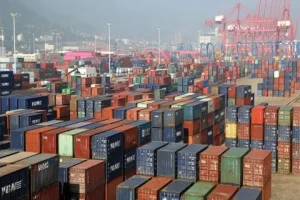Chinese President Xi Jinping created a stir recently at the UN General Assembly gathering by making a statement about Chinese intentions for tackling climate change.
He called on the world to achieve a green recovery for the world economy in the wake of the coronavirus pandemic. “We aim to have CO2 emissions peak before 2030 and achieve carbon neutrality before 2060,” Xi declared, without providing details on what neutrality will mean in practice.
Until now China has said it would peak its emissions by 2030 at the latest, but it has avoided committing to a long-term goal. Emissions continued to rise in 2018 and 2019 even as much of the world began to shift away from fossil fuels. China is the world’s largest source of carbon dioxide, responsible for around 28 per cent of global emissions. China produced 9.8 gigaton of carbon last year, a little less than the combined carbon emissions of the United States, European Union and India.
Due to coronavirus pandemic, China’s carbon emissions plunged by 25 per cent by June, though it had bounced back again as coal-fired plants, cement and other heavy industries went back to work. There is many a devil in the details, including what Beijing defines as carbon neutrality or peak emissions.
Chinese leader Xi, not known for his environmental concern, will have multiple reasons for the announcement. One is to place China firmly in a global leadership role when it comes to climate. The declaration will help boost a Chinese image much tarnished by its bullying neighborhood policy and its handling of the coronavirus epidemic, which originated in Wuhan. Another is to help boost China’s already considerable capabilities in green technologies such as electric vehicles, solar power plants and batteries.
Analysts believe that in making this announcement at this time, the Chinese leader is taking advantage of US reluctance to address the climate question and it demonstrates Xi’s interest in leveraging the climate agenda for geopolitical purposes. In 2014 Xi and then US President Barack Obama came to a surprise agreement on climate change, which became the basis of the Paris Agreement on climate change signed in December 2015. The most ambitious target set under the 2015 Paris climate agreement—holding warming below 1.5 degrees Celsius compared to preindustrial levels. The current global average is around 1°C of warming. The fact remains that China, as the world’s biggest emitter and energy consumer currently, exerts an enormous pull on the prospects for limiting future warming. And falling short of the 1.5°C target by just half a degree would cost the world $20 trillion by 2100, according to an analysis published in the journal Nature.
By playing the climate card a little differently, Xi has not only injected much- needed momentum to global climate politics but presented an intriguing geopolitical question in front of the world on a globally common issue. There are many questions about the announcement that remain unanswered, including what is meant by carbon neutrality and what actions the country will take to achieve.
To achieve the unrealistic target, China needs sweeping reforms that will have to be carried out all across dozens of regions run by local governments that may not share the zeal for reaching the 2060 goal. Beijing has long struggled with implementing grand plans from the centre in a continent-sized country of 1.4 billion people. Local officials often have more to gain by appeasing interest groups than listening to the national leaders, especially when those policies could affect local industries such as coal mining.
“Announcing a carbon neutrality target is just the first step on a long road,” says Bloomberg NEF. To reach this goal, China requires new technologies such as carbon-free hydrogen, Bloomberg NEF concluded, “and it will need to make its economy much more efficient.”
The scale of China’s undertaking will be immense since the nation alone accounted for 28 per cent of the global greenhouse gas total in 2019. Simply reducing the share of fossil fuels in its energy mix from 85 per cent today to less than 25 per cent would require $180 billion of investment each year through 2050, according to Sanford C. Bernstein & Co. Similar investments will be required in everything from electric vehicle production and infrastructure to cleaning up industrial processes such as cement and steel-making, which require enormous amounts of energy that can only be supplied reliably by fossil fuels right now.
The impact of China’s decisions will be huge..



















